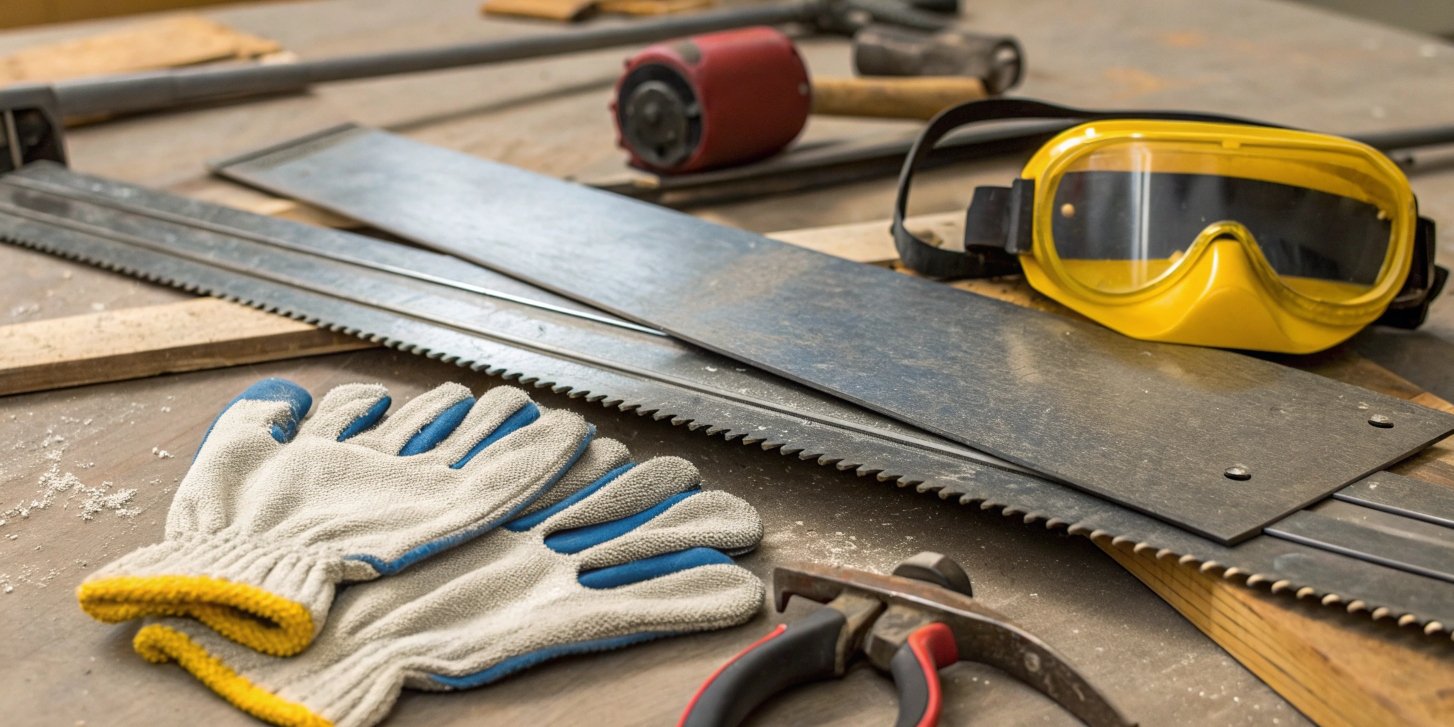
Struggling with high costs for cutting metal? These expenses can quickly eat into your project’s budget, slowing down your progress. Here are the most practical ways to do it cheaply.
The most inexpensive way to cut metal involves using an angle grinder with a resin cutting disc for thicker pieces or simple hand tools like hacksaws and tin snips for thinner sheets. These tools provide an excellent balance of low initial investment and effective cutting performance.
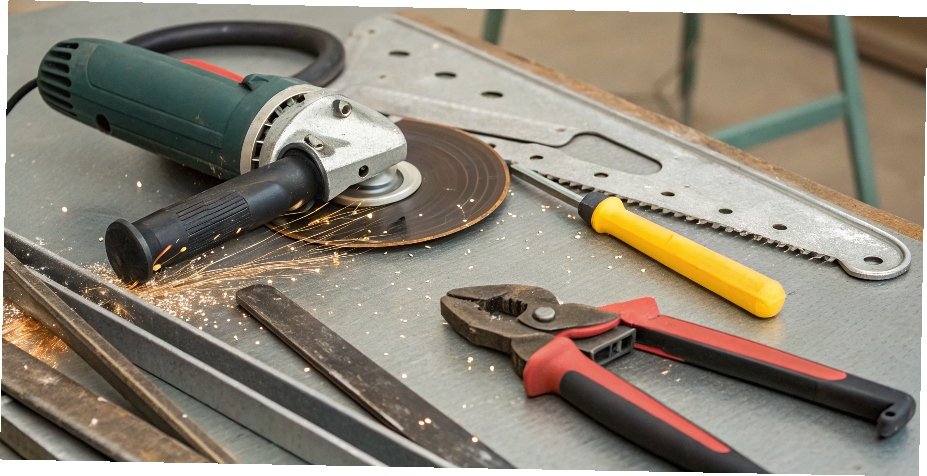
Finding the right balance between cost, safety, and efficiency is the most important part of any job. We see it every day in our factory. You might think the cheapest tool is always the answer, but the real savings come from matching the right tool to the right task. A tool that is cheap but slow can cost you more in labor. A tool that is fast but dangerous can cost you everything. Let’s look at the best options so you can make an informed choice for your specific needs, ensuring your work is both economical and safe.
What are the most affordable tools for cutting through metal?
Choosing the right cutting tool can feel overwhelming. Making the wrong choice can waste both your money and your valuable time. Let me show you the top budget-friendly options that we rely on.
The most affordable tools are angle grinders with resin discs, hacksaws, and tin snips. Each one is designed for a specific job. An angle grinder is a versatile power tool, while hacksaws and tin snips work great for smaller jobs without electricity.
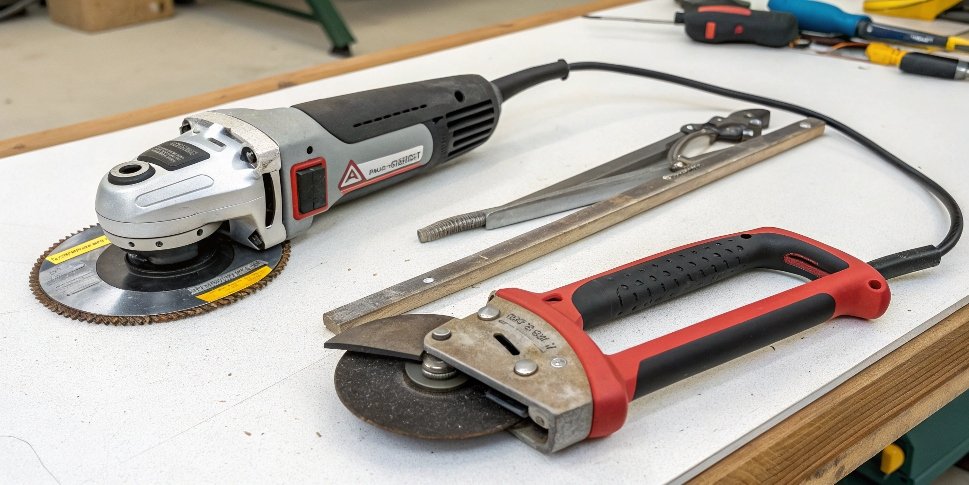
Here at our factory in Henan, we deal with abrasives all day. We understand what makes a tool effective. Let me break down these affordable choices.
The Angle Grinder: Your Workshop Workhorse
An angle grinder1 is probably the most versatile tool you can own for metalwork. Its power comes not from the tool itself, but from the disc you attach to it. For cutting metal, you need a metal cutting disc, usually a resin-bonded abrasive wheel2. These discs are designed to wear away as they cut, exposing fresh abrasive material. Based on my decades of experience, this is the most effective tool for metal plates up to 10mm thick. The initial cost of the grinder is low, and the cutting discs3 are inexpensive consumables. We manufacture millions of our RL brand cutting discs every year, and we’ve perfected the balance between cutting speed and durability to give you the lowest cost per cut.
Hand Tools: The Unplugged Solution
Sometimes, you don’t need a power tool. For thin metal sheets (under 1.5mm), a good pair of tin snips4 is perfect. For slightly thicker metal bars or plates (up to 5mm), a sturdy hacksaw is your best friend. I remember when I first started in this industry, my mentor had me cut dozens of steel bars with just a hacksaw. It taught me patience and proper technique. These tools are extremely cheap to buy, require no electricity, and give you excellent control for precise cuts. They are slower, but for small jobs, they are unbeatable in terms of cost.
How can you cut metal sheets without using power tools?
You find yourself on a job site with no power outlet. Your project is about to grind to a halt. Don’t worry, these simple manual methods will save the day and keep you working.
You can easily cut metal sheets without power tools by using tin snips for thin sheets (under 1.5mm) or a hacksaw for thicker plates (up to 5mm). These tools depend on your physical force, giving you great control and precision.
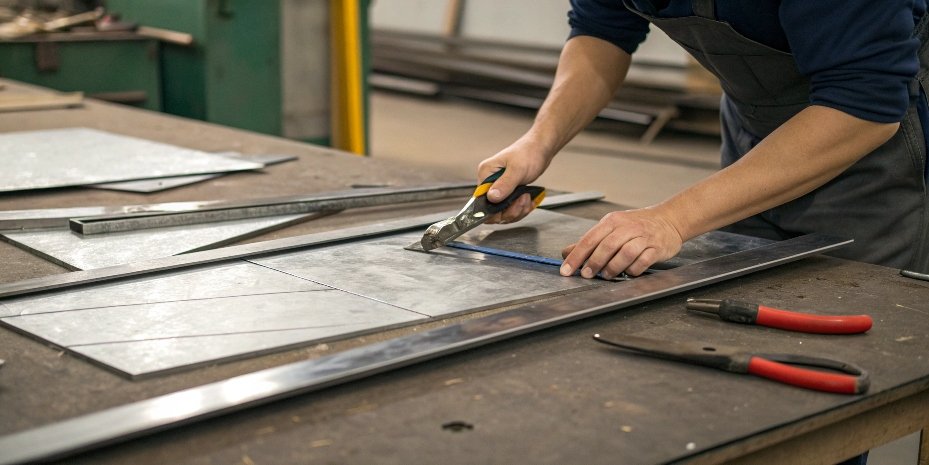
Working without power is a reality in many situations. It forces you to rely on skill and technique. As a tool manufacturer, we test all kinds of equipment, and the performance of a simple hand tool often comes down to its quality and the user’s skill. Let’s look at these two essential manual tools.
Mastering the Tin Snips
Tin snips, or aviator snips, are like scissors for metal. They are perfect for cutting thin-gauge sheet metal, like steel, aluminum, or copper, typically up to 1.5mm thick. There are three main types: straight-cutting (usually with yellow handles), left-cutting (red handles), and right-cutting (green handles). The left and right-cutting snips are great for making curved cuts. The key is to make small, continuous cuts rather than trying to chomp through the metal in one go. This gives you a cleaner edge and more control. They are essential for tasks like ductwork or auto body repair, where precision is more important than speed.
Working with a Hacksaw
The hacksaw is a classic tool for a reason. It consists of a simple frame that holds a replaceable blade under tension. The real secret to a hacksaw is choosing the right blade. Blades have different numbers of teeth per inch (TPI). A blade with more teeth (e.g., 32 TPI) is for thin metal, while a blade with fewer teeth (e.g., 18 TPI) is better for thicker stock. When you cut, use long, smooth strokes. Apply pressure on the forward stroke and release pressure on the backstroke. I was taught to hold the saw at about a 45-degree angle to the workpiece. This helps the teeth engage smoothly and prevents the blade from catching or breaking.
What is the most cost-effective method for cutting metal for projects?
Every project has a budget, and they are always tight. Overspending on your cutting process directly hurts your bottom line. I’ll show you how to match the method to the material to get the most value.
The most cost-effective method changes with the metal’s thickness. Use tin snips for sheets under 1.5mm and an angle grinder for plates between 1-10mm. Matching the tool to the specific job is the absolute key to saving money.
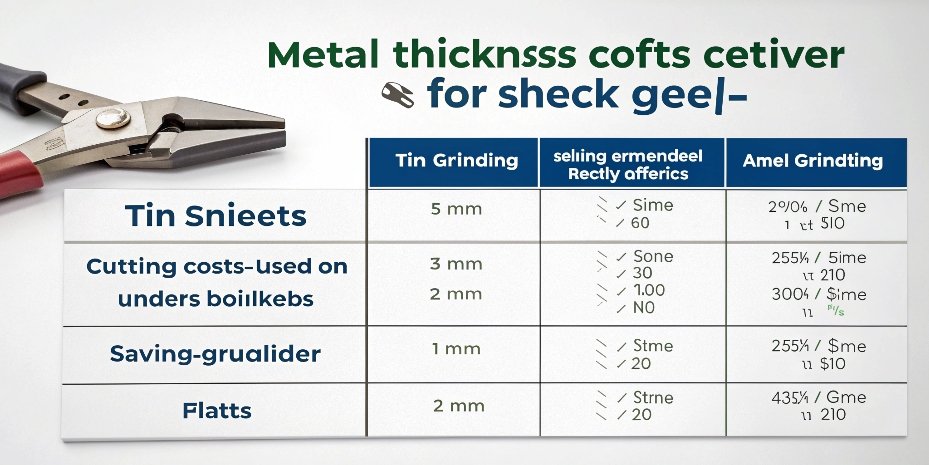
In our B2B business, we don’t just sell products; we provide solutions. A common question from our clients is how to reduce their cost-per-cut. The answer is always about choosing the right tool for the job. A cheap tool isn’t cost-effective if it’s slow or wears out too fast. True cost-effectiveness comes from a mix of tool cost, speed, and the life of the consumable.
A Cost-Benefit Breakdown
Let’s make this very simple. I’ve broken down the best choices based on material thickness. This is the same advice we give our industrial partners who need to optimize their production lines.
| Material Thickness | Recommended Tool | Why it’s Cost-Effective |
|---|---|---|
| ≤ 1.5mm | Tin Snips | Extremely low initial cost. No consumables or power needed. Perfect for thin sheets where speed is not the main priority. |
| 1mm – 10mm | Angle Grinder + Resin Disc | This is the sweet spot. Fast cutting speed combined with low-cost, replaceable discs offers the best value for most jobs. |
| 10mm – 20mm | Flame Cutting (e.g., Oxy-fuel) | Higher initial setup costs but becomes more cost-effective for very thick materials where an angle grinder would be too slow. |
We always tell our customers to think about the "total cost of ownership." A high-quality cutting disc from a reliable manufacturer like us might cost a few cents more upfront. But if it cuts twice as fast and lasts three times as long as a cheaper alternative, you are saving significant money on labor and replacement discs. That is the secret to a truly cost-effective operation.
Is using an angle grinder a cheap and safe way to cut steel?
Angle grinders are powerful, fast, and very inexpensive. But anyone who has used one knows they can be dangerous. An accident can be severe and very costly. So, follow these rules to use them safely.
An angle grinder is a cheap way to cut steel, but it is only safe if you follow strict safety rules. Always wear proper personal protective equipment (PPE), clamp the workpiece securely, and use the correct cutting technique to avoid injury.
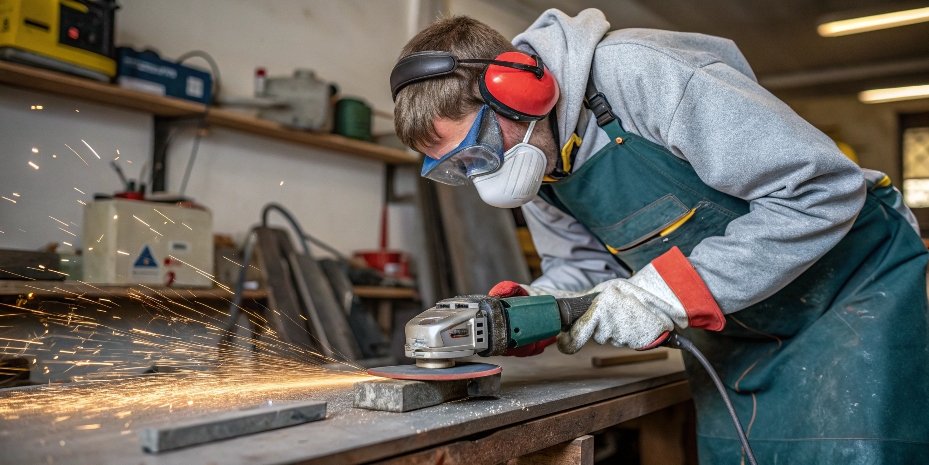
As a manufacturer of abrasive discs, safety is our number one priority. A tool is only useful if it can be operated without causing harm. An angle grinder spins a disc at over 10,000 RPM. You must respect that power. We have seen horrible accidents from improper use, and almost all of them could have been prevented.
Your Essential Safety Checklist
Before you even plug in the grinder, you must have the right gear. This is not optional.
- Safety Goggles & Face Shield: Sparks and metal fragments will fly. A disc can shatter. Your eyes are irreplaceable.
- Gloves: Thick leather gloves protect your hands from sharp edges and sparks.
- Ear Protection: Angle grinders are loud and can cause permanent hearing damage over time.
- Proper Clothing: Avoid loose-fitting clothes that can get caught in the spinning disc.
Correct Operating Technique
How you use the tool is just as important as the safety gear you wear.
First, secure your workpiece. Use clamps to hold the metal firmly in place. Never try to hold a small piece of metal with your hand while cutting it. The grinder can kick back and cause a serious injury.
Second, use the right technique. Hold the grinder with both hands. When cutting, approach the material at a slight 15-degree angle instead of a straight 90 degrees. Let the weight of the tool and the speed of the disc do the work. Don’t force it.
Finally, inspect your discs. Before every use, check the cutting disc for cracks or damage. Never use a damaged disc. We also advise replacing discs after a certain amount of use. A worn-down disc is not only inefficient but also a major safety hazard.
Conclusion
Cutting metal on a budget is very achievable. Choose the right tool for the job, prioritize safety with the correct gear and technique, and you will get great results efficiently.
-
Explore this link to find the top-rated angle grinders that offer efficiency and safety for metal cutting. ↩
-
Explore the role of abrasive wheels in metal cutting and their benefits. ↩
-
Explore tips for selecting the best cutting discs to optimize your metal cutting tasks. ↩
-
Find out how to select the perfect tin snips for your metal cutting needs and projects. ↩
Written by
leeon
You may also be interested in:
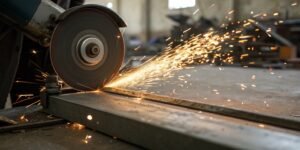
Can you use a diamond blade to cut through metal?
You need to cut some metal, and the diamond blade on your saw is right there. Using the wrong disc can destroy your blade, damage
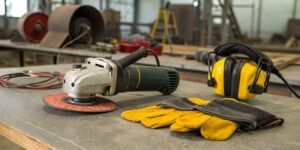
Why are 9-inch angle grinders banned in Australia?
Struggling with worksite safety compliance? Using oversized tools can pose huge risks. Understanding Australia’s ban on 9-inch grinders helps you see why safety regulations are

Can you cut more than just metal with an abrasive chop saw?
Stuck thinking your abrasive chop saw is a one-trick pony for metal? This mindset costs you money and clutters your workshop with tools you may
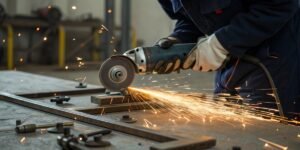
How do you cut bolts with an angle grinder?
Struggling to make a clean cut on a stubborn bolt? Using an angle grinder can feel intimidating, but it is a fast and effective method
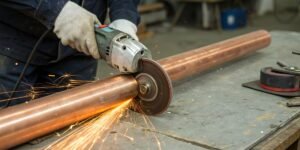
Can I use an angle grinder to cut a copper pipe?
Struggling with a quick copper pipe cut? Worried about damaging the material? An angle grinder is a fast solution, but using it wrong can be
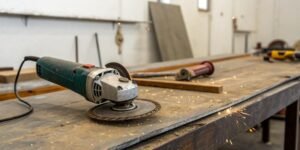
Can an angle grinder cut meat and bones?
Struggling to cut tough bones? Thinking of grabbing your angle grinder for a quick solution? This powerful tool seems like an easy answer, but it’s
